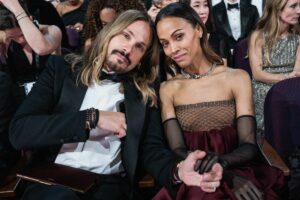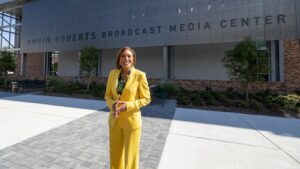VANCOUVER, British Columbia — It didn’t take long for Anthony Davis to line up a 3-pointer in the Dallas Mavericks’ Oct. 6 preseason opener against the Oklahoma City Thunder.
Davis, whom doctors have ordered to wear protective glasses for the rest of his career after he had offseason surgery to repair a detached retina in his right eye, connected from 26 feet away less than three minutes into the game.
So far, Davis has seemed comfortable with the eyewear he’s resisted wearing in the past. During the Mavericks’ first week of training camp in Vancouver, Davis explained he had gotten acclimated to his Oakley glasses in the offseason and felt the adjustment to wearing them had become “pretty easy.”
Davis struggled in the Mavericks’ loss to the Charlotte Hornets on Saturday in Dallas. But two nights later, he excelled on both ends of the floor in his team’s road win over the Utah Jazz, compiling 25 points, six rebounds, two steals and two blocks in 25 minutes.
“There’s really no adjustment,” Davis said about his new eyewear. “Nowadays, they don’t fall down. They are pretty tight. I guess the adjustment is having something on my face. I’m used to being able to do whatever I want.”
According to Dr. Richard Toyos, an ophthalmologist in Tennessee who worked for the Memphis Grizzlies from 2002-08, the recovery process from a detached retina depends greatly on if the macula was affected. A round area at the center of the retina located near the back of the eye, the macula is responsible for a person’s central vision. It has a high concentration of photoreceptors, thus allowing a person to see fine details.
“There is the peripheral retina, which is responsible for some vision. And then, there’s the macula,” Toyos said. “That’s the portion of the retina that’s responsible for the most vision and the sharpest part of your vision.”
Patients dealing with a macula-on retinal detachment typically undergo surgery within 24 hours because doctors want to preserve their still-intact central vision. Patients who have suffered a macula-off retinal detachment don’t need immediate surgery because their central vision has already been affected.
“A macula-on recovery is going to be much easier,” Toyos said. “With that type of detachment, the chances of recovering 20-20 vision is higher.”
It’s unclear whether the macula in Davis’ right eye was affected. Even in the best-case scenario that Davis had a macula-on retinal detachment, Toyos said he would recommend avoiding physical activity for at least one month after surgery.
“I would want everything to be stable before exercising again,” Toyos said.
Davis said he was able to practice shooting jump shots this summer with his new eyewear on. He didn’t resume playing five-on-five until just before the start of Mavericks training camp. Davis was listed at 268 pounds on the Mavericks’ training-camp roster — 15 pounds heavier than what he was listed the previous season.
“I never want to come in at my playing weight, because then I lose weight during the season, and then I’m too small,” Davis said. “I lose about 10 to 12 pounds very quickly. During training camp, I already lost five pounds.”
While still a member of the Los Angeles Lakers, Davis dealt with minor injuries to his left eye. In November, he exited a game early after being poked in the face. Eight months before that, Davis suffered a corneal abrasion in that same eye. Davis didn’t miss extended time in either instance.
When reporters asked him then if he might consider wearing protective eyewear, he said no.
“I don’t want to, and the doctor said I didn’t have to,” Davis said in November. “Now, if it gets to a point where doctor orders are to (wear goggles), then of course I will.”

Anthony Davis is defended by Oklahoma City Thunder guard Brooks Barnhizer during an Oct. 6 preseason game. (Jerome Miron / Imagn Images)
Davis said he believed his most recent eye injury occurred when teammate Daniel Gafford accidentally elbowed him in the face during an April 2 game against the Atlanta Hawks. Davis left the floor in the first half to receive stitches.
He returned to action and ended up hitting the game-winning shot — the capper to a 34-point, 15-rebound performance.
ANTHONY DAVIS WINS IT FOR DALLAS IN THE FINAL SECONDS 🚨🚨
HITS THE FLOATER OVER TOUGH COVERAGE TO SECURE IT!! pic.twitter.com/vCvDYXg2oV
— NBA (@NBA) April 3, 2025
Doctors discovered Davis’ retinal detachment during a routine summer checkup, Davis said. He isn’t the first high-profile player to be medically mandated to wear protective eyewear. Amar’e Stoudemire, who rose to stardom with the Phoenix Suns in the early 2000s, began permanently wearing glasses after suffering a detached retina in February 2009.
The surgery Stoudemire underwent caused him to miss the final 29 games of the 2008-09 season. Stoudemire made a full recovery in time for the 2009-10 season and played well, averaging 23.1 points and 8.9 rebounds, being named an All-Star and appearing in all 82 regular-season games.
In 2011, Stoudemire opened up about his recovery during an interview with late-night TV host David Letterman.
“I had to pretty much lay down on the table for 22 hours a day for 10 straight days in order to reattach the retina,” Stoudemire said in the interview. “You can’t move at all. Honestly, it was torture. It was extremely hard, but I read a lot, I watched DVDs on my laptop, and I just slowly passed the time on. It was something that was extremely terrifying.”
While Davis has previously avoided protective eyewear as a pro, he did wear goggles as a high school player in Chicago. They were much bulkier than the sleek Oakley brand he sports now.
Anthony Davis in high school. pic.twitter.com/Z0nxqFIeMX
— Fastbreak Hoops (@FastbreakHoops5) August 6, 2025
Davis will need to continue wearing the protective glasses for as long as he’s playing basketball. He said he anticipates breaking at least one pair this year, an inevitability for a big man whose job is to battle for rebounds and protect the rim.
“But I have a lot of backups,” Davis said.




